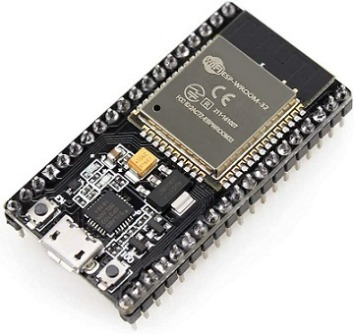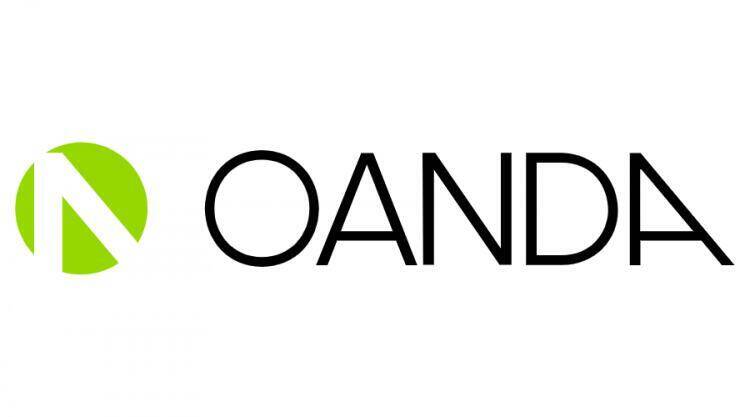Contents:


Stay on top of upcoming market-moving events with our customisable economic calendar. NSCU, BSc CS Candidate WCU. Life-long learner and entrepreneur specializing in design, digital marketing, and web app development. Fascinated by natural systems, concurrency, and the nature of consciousness. Sum of squared distances of samples to their closest cluster center, weighted by the sample weights if provided. The function names with __ in the beginning mean they are private functions. There is a public “getter” function to retrieve the levels called, “getSupportResistanceLevels”.
The elbow method involves calculating a KMeans clustering for a series of different k values. Many of the actual prices have been manually removed from the printout here to save space. However, the full printout of the clusters variable indicates that each price has been assigned to one of the 6 total clusters.
Support is the level at which demand is strong enough to stop the stock from falling any further. In the image above you can see that each time the price reaches the support level, it has difficulty penetrating that level. The rationale is that as the price drops and approaches support, buyers become more inclined to buy and sellers become less willing to sell.
3 Top Breakout Stocks Worth a Buy in 2023 – Yahoo Finance
3 Top Breakout Stocks Worth a Buy in 2023.
Posted: Thu, 12 Jan 2023 08:00:00 GMT [source]
They were thinking about buying the stock at $50 but never “pulled the trigger.” Now the stock is at $55 and they regret not buying it. They decide that if it gets to $50 again, they will not make the same mistake and they will buy the stock this time. Now, if a stock breaks the resistance line, we could see it then act as a support.
There are minor and major support and resistance levels, and levels which are in the direction of the trend or countertrend. These support and resistance levels give you a broader view of the market, allowing you to make informed decisions when entering or exiting trades. Multiple touches – A single touch turning point is not sufficient to indicate establish support or resistance levels. Multiple touches to the same approximately level should be present, such that a horizontal line could be drawn through those turning points.
However, it is important to remember that past calculating support and resistance levelss may have formed under different circumstances, so they are not always a reliable indicator. Support and resistance levels are used in technical analysis to predict reversals in price trends. A falling price might be likelier to stop falling when it nears a support level. Conversely, a rising stock price might be likelier to stop increasing when it nears a resistance level. Support and resistance levels are not infallible and, as we will see later, determining such price ranges is no simple task.
Wang, Q.; Sang, H.; Chen, L.; Wu, Y.; Wei, Y. Selective separation of Pd through ion exchange and oxidation-reduction with hexacyanoferrates from high-level liquid waste. 2 shows that the adsorption rate remained approximately equal before and after 50 kGy irradiation. The adsorption rate is an important factor in judging adsorption performance. Figure 5 shows the effects of contact time on Pd adsorption. The adsorption ratios of the KAlFe6/SiO2 adsorbent for Pd rapidly increased with time. When the contact time reached 15 min, the adsorption ratios of Pd were over 87%, 86%, and 81% for 0, 50, and 1000 kGy irradiated adsorbents, respectively, indicating excellent adsorption kinetics.
How to Identify Reversals and Retracements
Furthermore, different timeframes can show different trends on the same currency pair. A healthy uptrend on the 4-hour chart may look like a downtrend on the 15-minutes chart, while the downtrend may only be a counter-trend price-correction of the uptrend. The Fibonacci tool will draw percentage levels between the selected swing low and high, with the 23.6, 38.2 and 61.8 levels usually being the most important levels where the price might retrace. Don’t forget that technical analysis is not an exact science and it is subject to interpretation. If you continue your study of technical analysis, you’ll likely hear someone say it is more of an art than a science. As with any discipline, it takes work and dedication to become adept at it.
In this article, I’ll refer to key levels as price levels, but there are some traders saying that key levels are areas, not levels. That happens because volatility makes everything noisier, so supply and demand zones are never that clear. That’s why, in real life trading, you should always consider some kind of envelope around a key level, roughly as wide as volatility (e.g. Average True Range, Standard Deviation). For the seek of simplicity, in this article I’ll consider key levels as fixed price levels and not wider zones.
Whether the price is halted by or breaks through the support or resistance level, traders can “bet” on the direction of price and can quickly determine if they are correct. If the price moves in the wrong direction , the position can be closed at a small loss. If the price moves in the right direction , however, the move may be substantial. When support or resistance levels overlap on different indicators, they generate an even more significant support or resistance price level. The reaction tends to be stronger as the level becomes more significant.
Plan your trading
Therefore, it is important to establish from the start the two types of support and resistance levels that every stock has. Notice in both the support and the resistance level, there at least 3 price action zone identified at the price level, all of which are well spaced in time. The next obvious question is, how do we identify the resistance level? Identifying price points as either a support or resistance is extremely simple.
- If the price manages to breakout through resistance, the short sellers are usually the first to cover their position and consider reversing to the long side.
- If the price moves in the wrong direction , the position can be closed at a small loss.
- Pivot points may be the most commonly used leading indicators in technical analysis.
- Pivot points are another essential tool in technical analysis that helps traders identify potential support and resistance levels.
- With the indicator enabled, draw a diagonal line from the highest peak to the lowest peak to see which way the trend is moving.
This also applies for short sellers that will enter near resistance levels looking to profit on the price rejection and sell-off. If the price manages to breakout through resistance, the short sellers are usually the first to cover their position and consider reversing to the long side. Resistance levels that breakout can also be traded long for a new or next leg of an up trend. Support levels that breakdown, can be traded short for a new or next leg of a downtrend. It is important to gauge the range of the deflections off the support and resistance levels.
A Support and Resistance Trading Strategy
The trendlines drawn here seem incredibly useful but have the benefit of hindsight. Calculating support and resistance levels in real-time is never as easy. Programmatic calculation of these levels is of paramount importance to algorithmic trading, technical analysis, and high-frequency trading. The K-means clustering algorithm is one means via which pricing levels can be identified such that support and resistance levels can be discovered.
The support level is where the price regularly stops falling and bounces back up, while the resistance level is where the price normally stops rising and dips back down. The levels exist as a product of supply and demand – if there are more buyers than sellers, the price could rise, and if there are more sellers than buyers, the price tends to fall. Around September 2022, the first weekly close below this line is noted. The price recovers over the next few weeks, all the way up to the resistance line again, before entering a downtrend in the following weeks after that.
The angles of the three main diffraction peaks slightly decreased with the increase in irradiation dose from 17.672°, 25.028°, and 36.051° to 17.482°, 24.840°, and 35.746°, respectively. The results can be explained by the action mechanism of irradiation. The effect of γ rays is identical with that of β rays except for the thermal effect . Under γ-ray irradiation, free electrons were formed in the KAlFe6 structure because of the photoelectric and Compton effects. The electrons interacted with the adsorbent and caused atomic displacements, forming defects such as dislocation loops . The KAlFe6/SiO2 adsorbent was synthesized by using a two-step loading method.
Each https://traderoom.info/ is a tuple whose first element is the index of the signal candle and the second element is the price value. Support identification using fractalsFractals are very useful because they remove some of the noise shown by the swings and identify key levels with higher accuracy. A zone of support refers to a price zone reached when a security’s price has fallen to a predicted low, known as a support level. Options have historically been priced in $2.50 increments up to $100 and algorithm programs have used these levels as inflection points. The phenomenon still exits in the markets where prices reach an inflection point with $2.50 increment levels are tested (I.E. $35, $37.50, $70, $72.50, etc.). For traders who are bearish and shorting the market, the approach to setting pivot points is different than for the bullish, long trader.
Article Metrics
The more times a stock bounces off of a support or resistance, the stronger this line is. As you can see in the picture above, the red line represents the support. As you can see with the circles, the stock price has bounced off of this support line 4 times in the last 4 months. The sellers have been unable to beat the buyers when the stock price approaches the support level. It is simply that many market participants are acting off the same information and placing trades at similar levels. Support and resistance areas can be identified on charts using trendlines and moving averages.
4 Best Breakout Stocks to Buy for Superb Returns – Yahoo Finance
4 Best Breakout Stocks to Buy for Superb Returns.
Posted: Fri, 24 Feb 2023 08:00:00 GMT [source]
By using the CCI in conjunction with support and resistance levels, you can improve your trading strategy and enhance your market analysis. Here we use K-Means clustering to identify long-term support and resistance levels. For trendlines, a combination of linear regression and minima-maxima calculation is used. Each offer different benefits but, as with many technical indicators, are more powerful when used together.

To draw the Fibonacci retracements on your chart, click the Fibonacci tool on your Toolbar and select the swing lows and highs on your chart, which represent the initial move of the trend. To draw a horizontal line on your chart, select the horizontal line button on your Toolbar and click anywhere on the chart where you want the line to appear. Support – Any point where a falling stock price meets enough buyers to arrest the fall.
Support and resistance levels are key concepts used by technical analysts and form the basis of a wide variety of technical analysis tools. The basics of support and resistance consist of a support level, which can be thought of as the floor under price, and a resistance level, which can be thought of as the ceiling above price. The more buying and selling that has occurred at a particular price level, the stronger the support or resistance level is likely to be. This is because traders and investors remember these price levels and are apt to use them again.
